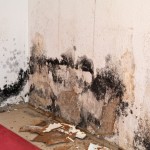Hurricane Sandy and IAQ Series: Top Hurricane Sandy Effects on IAQ this Spring
This week starts our Hurricane Sandy and indoor air quality (IAQ) series. We’ll start with the top IAQ concerns relevant to Hurricane Sandy as spring hits.
 Then in the next few weeks we’ll discuss why IAQ will be a huge concern in New York and New Jersey this spring and summer. We’ll also share our tips for ways to prepare for extreme conditions.
Then in the next few weeks we’ll discuss why IAQ will be a huge concern in New York and New Jersey this spring and summer. We’ll also share our tips for ways to prepare for extreme conditions.
As we end the series, we’ll offer our infographic about IAQ and Hurricane Sandy.
Winter conditions have seemed to stop some of the ill effects of Hurricane Sandy, as renovations halt and colder weather inhibits the growth of bacteria and fungi. But spring will likely bring a regrowth of problems attributable to Hurricane Sandy, as warmer weather arrives and renovations resume.
Mold growth will again be a problem this spring in areas affected by Hurricane Sandy.
The roofs and siding in homes that have suffered damage from strong winds may leak. Most likely, homeowners won’t discover the leaks until the spring rains arrive, although it’s likely that problems already exist. That’s because moisture damage and mold growth is probably already growing, undetected, in areas such as attics or inside wall cavities.
Mold growth can cause allergies and trigger asthma attacks in susceptible individuals. One type of mold known as aspergillus can cause an infection called aspergillosis, according to the environmental consulting firm Clark Sief Clark.
CNN reports that some strains of aspergillus can cause serious illnesses when the spores are “inhaled by people with a weakened immune system, underlying lung disease or asthma.” Milder cases may result in allergic reactions, while more serious cases include lung infections.
The most serious form of the disease, invasive aspergillosis, results when the infection spreads to blood vessels. Read our post Post-Hurricane Sandy Series: Mold and Mildew Management for more about how to address and stop mold growth.
Asbestos and lead exposure will be the other top IAQ concerns as renovations begin on homes and businesses damaged by the hurricane. The Environmental Protection Agency (EPA) advises that “many homes, particularly older homes, may contain asbestos, a known carcinogen.”
Both homes and commercial buildings built before 1975 may contain large amounts of asbestos, but so may buildings built after 1975, says the EPA. Some types of materials that can contain asbestos include pipes, insulation, patching and joint compounds, roofing and siding shingles, resilient floor tiles and vinyl sheet flooring.
Buildings built before 1987 may contain lead-based paint; it was banned for use in paint after that time. Any clean up or demolition can aerosolize asbestos or lead, according to Clark Sief Clark. Inhaling dust contaminated with asbestos or lead can cause adverse health effects.
The Centers for Disease Control and Prevention (CDC) warns asbestos exposure may increase the risk of “lung cancer, mesothelioma, and nonmalignant lung and pleural disorders.” The Occupational Safety and Health Administration (OSHA) explains lead exposure can cause symptoms such as nausea, vomiting, fatigue and headaches. But more serious cases due to long-term exposure may severely damage the “blood-forming, nervous, urinary, and reproductive systems.”
The EPA recommends that homeowners cease any renovations if they believe their buildings might contain asbestos or lead and contact state or local public health authorities for assistance. Additionally, when dealing with asbestos or lead, it’s important not to undertake renovations until you understand any federal, state or city laws and regulations that apply to their removal, stresses Clark Sief Clark.
The EPA provides some fact sheets to address some of the concerns you might face when you’re cleaning up and/or renovating your property due to the damage caused by Hurricane Sandy.
Next Steps:
- Subscribe to our blog to receive the full blog series via email and stay informed about the latest HVAC news and insight.
- Stay up to date on facility maintenance tools such as chiller tube cleaners, boiler tube cleaners, hose/pipe cleaners, descaler systems, industrial vacuums, commercial pressure washers, and drain cleaners.


Guillermo
Medical use: Based on the number of researches performed by various institutes, it
can be known the vapor produced in the balloons consisted of lower concentration of
harmful toxics as compared to the other vaporizers.
The direct lung delivery method generally provides for greater
volume, as the amount of available vapor isn’t limited by storing it. The kind of pen vaporizer which utilizes cartridge strategy is usually known as cartridge pen vapes.